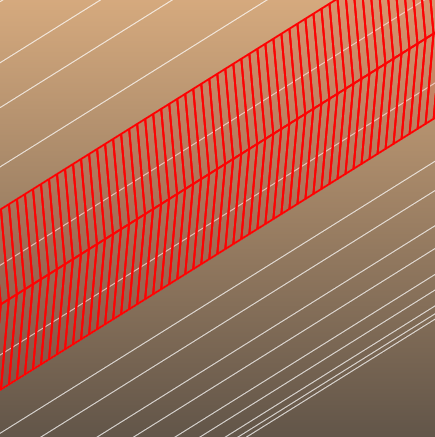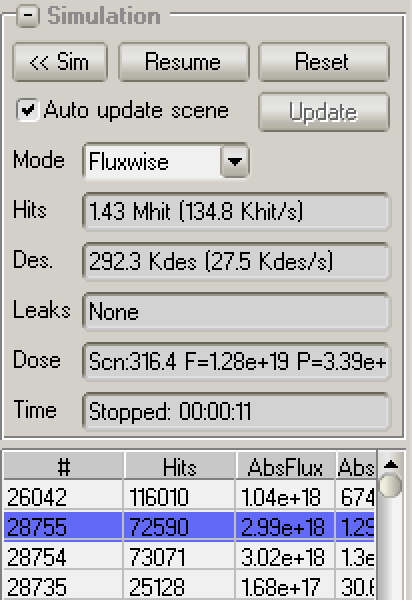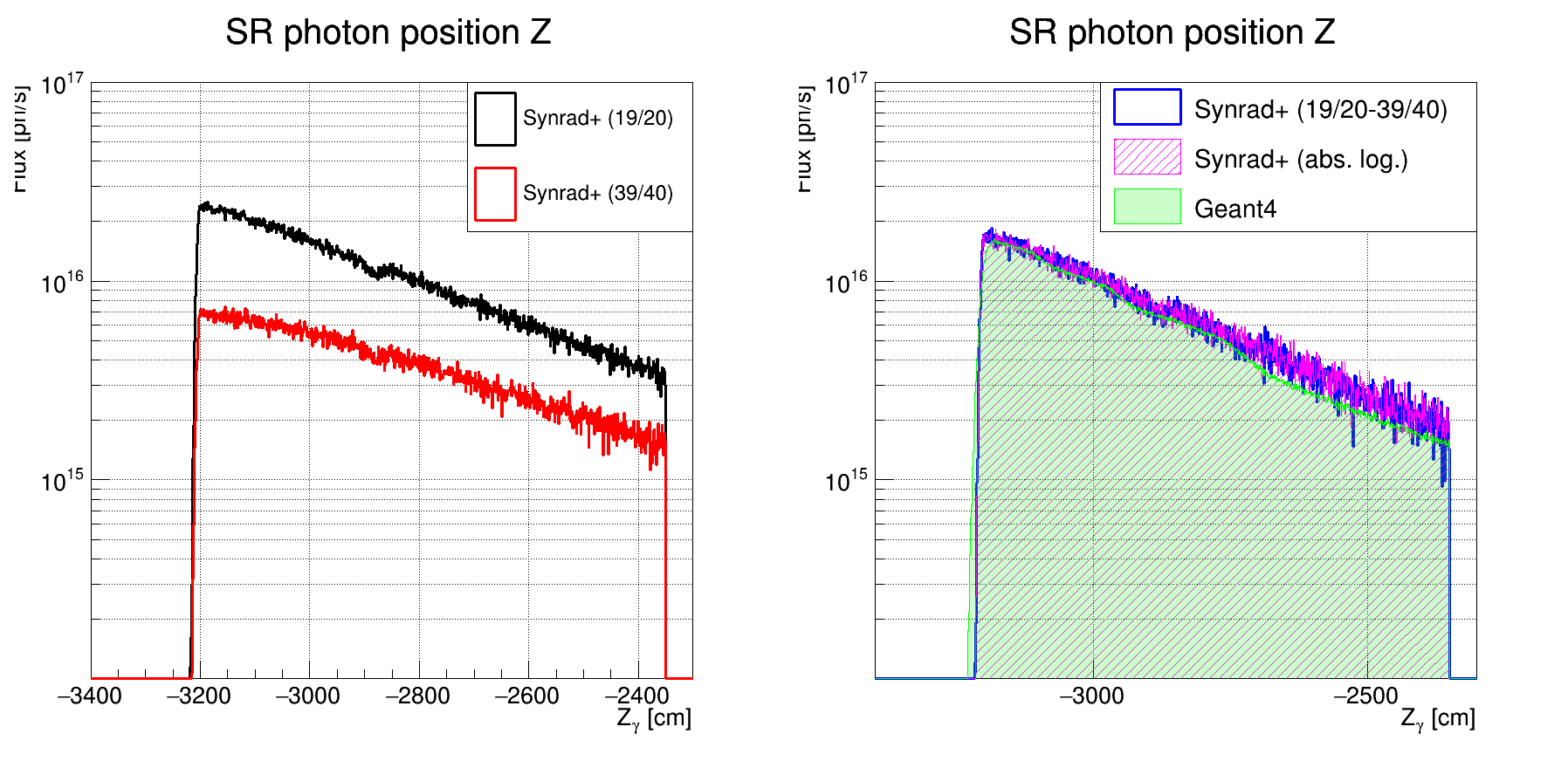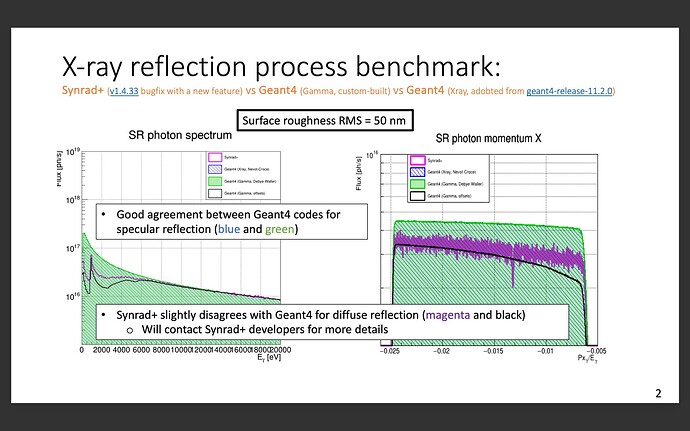Dear Synrad+ experts,
I’m working on the synchrotron radiation (SR) background simulation for one of the HEP experiments. I simulate the SR background in a particle detector from the electron accelerator. Initially, I planned to use Synrad+ for this task, but the problem is that Synrad+ cannot simultaneously store SR photon data (flux, energy, position, and direction) for all facets. And since we have about 30k facets, it is almost impossible to store the information one by one (it takes ages). Therefore, I decided to switch to Geant4, implementing SR photon reflection there using Synrad+ scattering probability tables (e.g., 02-Copper.csv), while reflection angles (theta and phi of the specular reflection) are smeared according to the following rule: thetaOffset=atan(sigmaRatio*tan(PI*(rnd()-0.5))); and phiOffset=atan(sigmaRatio*tan(PI*(rnd()-0.5))); from here.
Before using my Geant4 code, I performed a benchmark in order to find possible bugs and improve the code. A concise summary can be found here.
According to my results, it looks like the Synrad+ output flux of SR photons does not match my expectations based on the Geant4 code (page 2) and measurements (page 312, Table III - Copper).
As one can see on page 4 (my doc), switching between the ideal absorber (sticking factor = 1) and a real absorber (02-Copper, roughness ratio = 0.005) for the vacuum pipe does not impact the absorbed SR photon flux vs horizontal incident angle.
This analysis I did for only two facets with the highest SR flux from the 18 GeV electron beam passing through two dipole magnets with By = 0.2545244034 T.
Thus, could you please help me understand if it is a bug in Synrad+ (which I doubt) or my incorrect interpretation of Synrad+ results?
I appreciate any feedback you can provide.
Thanks and best regards,
Andrii






























